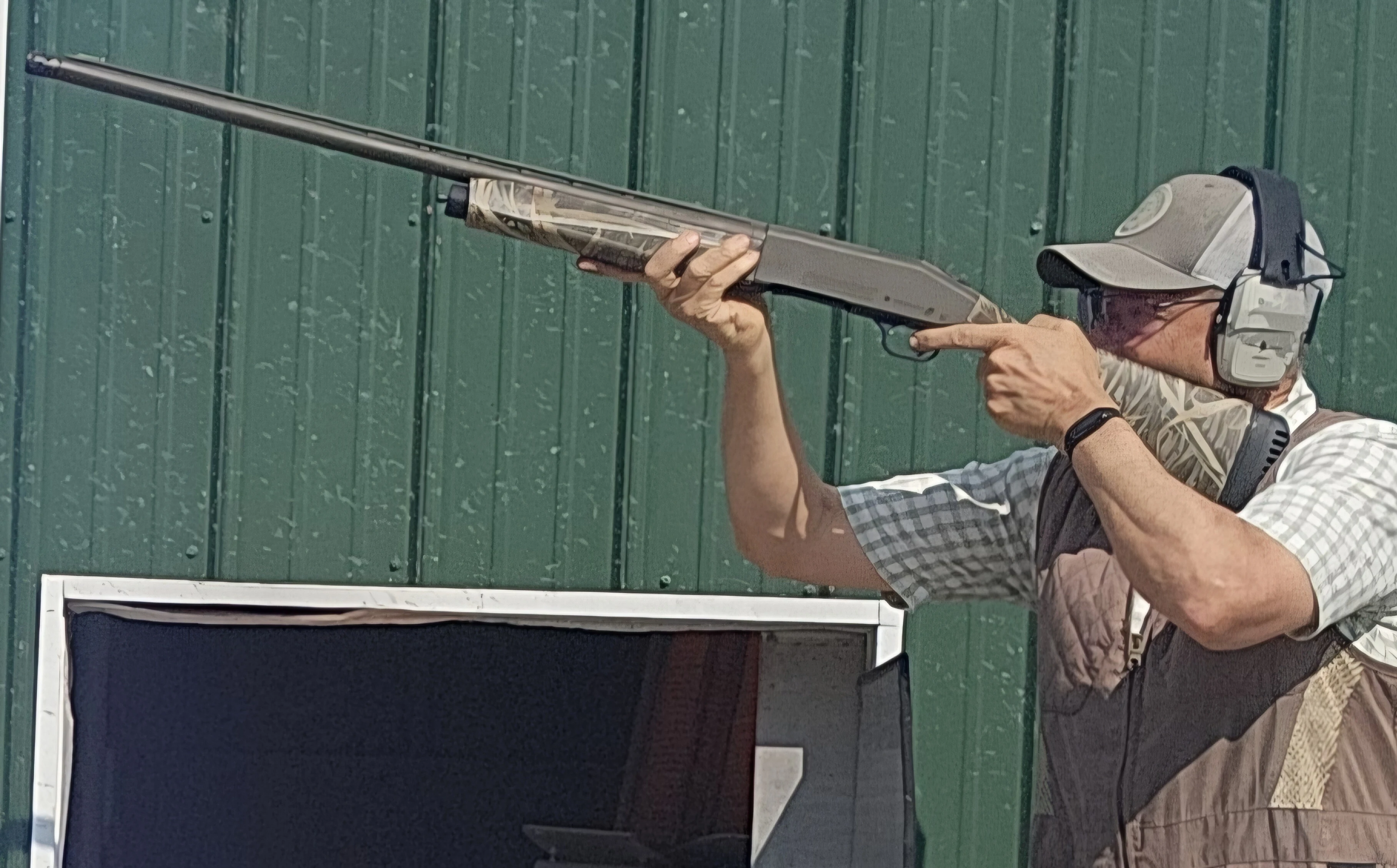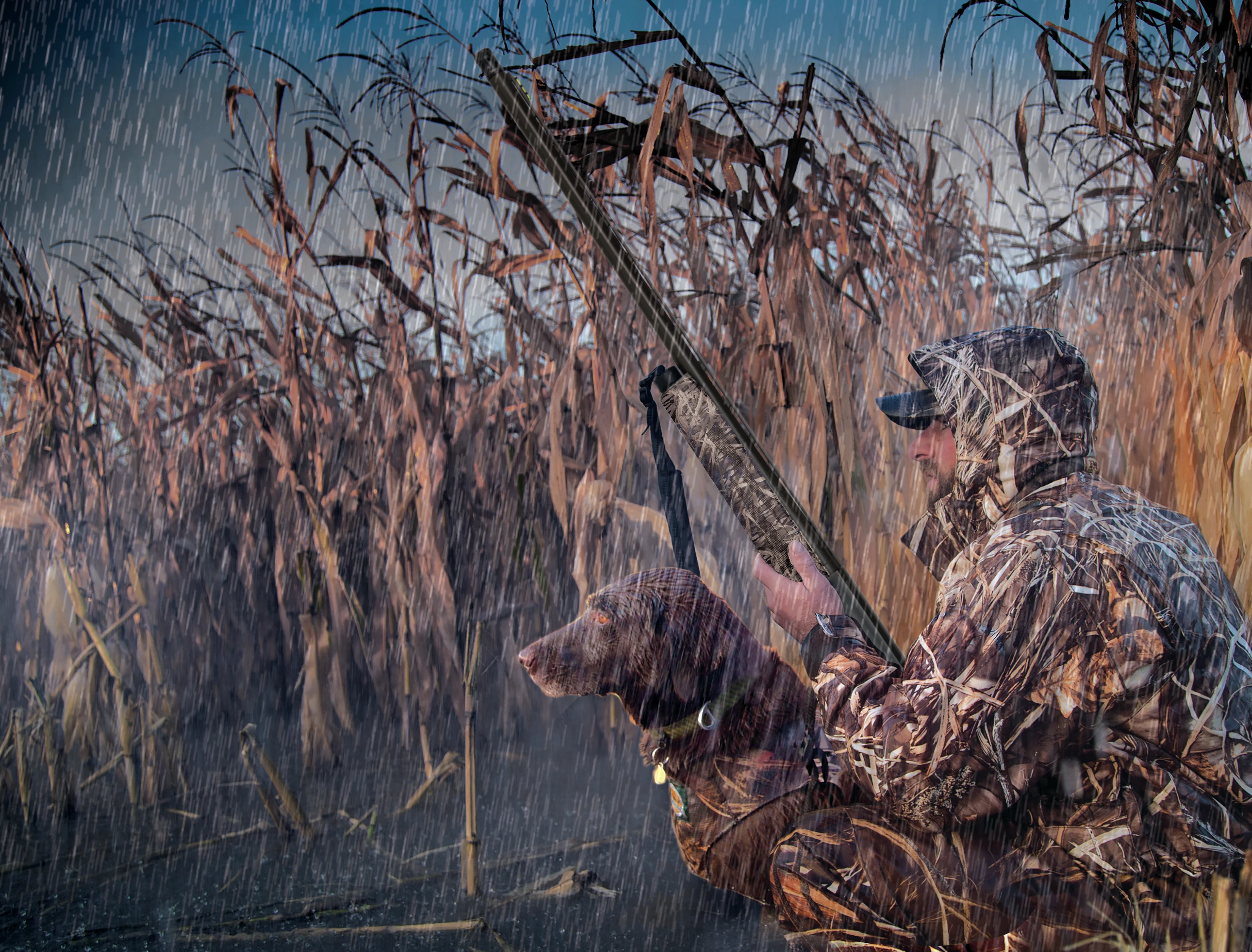For 2024, Mossberg is offering a new version of the 940 Pro Waterfowl, which adds two new features to the already long list of improvements made to this gun over time. The 940 Pro is the evolution of the 930 gas gun. With the help of pro shooter Jerry Miculek, Mossberg made changes to the 930 to improve its reliability, upgrading the buffer tube from plastic to ported aluminum and weather-proofing the gun with a stainless-steel return spring and boron and chrome-lined chambers and bores. The pro also has a self-draining stock, which helps prevent corrosion damage to the return spring and tube.
Mossberg claims the 940 Pro will run 1500 rounds between cleaning, a big improvement over the original 930s. As for the latest improvements on the 940 Pro Waterfowl, one is very welcome, while the jury (that’s a jury of one, me) is still out on the other. So, let's take a closer look.
Mossberg 940 Pro Waterfowl Specs
Length: 49.75 inches (with 28-inch barrels and stock spacers in place)
Weight: 7.7 pounds
Barrel: 28-inch vent rib, two flush mount, one extended Accu-Choke (Winchoke pattern), seven interchangeable fiber-optic beads
Action: Gas semiautomatic
Trigger: 5 pounds, 5 ounces
Capacity: 4+1
Finish: Patriot Brown Cerakote
Stock: Synthetic, Mossy Oak Shadowgrass camo
Chambering: 3-inch 12-gauge
Price: $1264
Mossberg 940 Pro Waterfowl Overview
The 940 Waterfowl Pro comes in 3-inch, 12-gauge only, with a 28-inch, flat-rib barrel and a Hi-Viz fiber-optic bead with seven interchangeable beads of different sizes and colors. You get one extended, Modified Accu-Choke and two flush choke tubes with the gun. Metal parts have exterior “Patriot Brown” Cerakoting, which I would have called Olive Drab, but Patriot Brown works. The synthetic furniture is dipped in original Mossy Oak Shadowgrass camo, and the black buttpad has several spacers that allow you to adjust length from 13 inches to 14.25 and also make drop and cast adjustments.
The gun has a huge charging handle and bolt-release button, and a brand-new, enlarged safety, which marks a much-needed improvement that, as I understand it, extends to the entire M500, 835, 940, and 935 lineups. The old top safeties on Mossbergs could be sharp and stiff to operate. This one, while still plastic, is broad, textured, and easy to use. As one who hates difficult safeties, I love this one. The gun also loads easily, which is always a plus when fingers are damp and cold.
Mossberg 940 Pro Waterfowl Range Results

My test gun weighed 7.7 pounds, with a lot of that weight in the front end. It’s one of those guns that feels nose-heavy and awkward when you pick it up, but swings smoothly. I didn’t have any trouble hitting clay targets with it. The gun was a bit slow to start but easy to keep moving, and I have always been a slow-and-steady-wins-the-race type shooter. The gas system and the gun’s weight dampened recoil effectively, too. The trigger broke a little above 5 pounds with just a touch of squish, which should be acceptable to those of you who, unlike me, are concerned about trigger pull on a shotgun. It also shot very close to my point of aim on a pattern plate.
Oddly, the 940 Pro and Browning 1200 fps, 1 1/8-ounce target loads I used did not mix on any of the occasions I shot the gun. The hulls would stick in the chamber, or not fully eject. Lighter 1180 fps, 1-ounce loads worked fine, as did every other shell in my box of mixed target loads. Waterfowl loads of various brands cycled without incident, too. Polishing the chamber might solve this problem, but since this is a hunting gun and hunting ammo works in it, I don’t see it as much of a problem.
The second and most apparent addition to the 940 Pro Waterfowl is that the receiver is cut for an RMSc Shield-pattern red-dot sight, and I tried shooting with one a few times. I think these are brilliant additions to a turkey gun. For wingshooting guns, I am not so sure. I found the red-dot set so close to the bore—an advantage in turkey hunting—didn’t add much to my wingshooting ability, and in fact, detracted from it because it added the frame of the dot as an obstacle to seeing the target.
These cuts are showing up on more guns, and I have been experimenting with other mounting systems, and I plan to report on that soon. In the meantime, this setup didn’t work for me. The gun is also tapped for traditionally-styled mounts, too, so you could mount a scope or some other red-dot sight of another footprint. There’s also a metal plate that fits over the cut, so you don’t have to use it if you don’t want to.
Final Thoughts on the Mossberg 940 Pro Waterfowl

Pros:
Coated internal parts for better function
Improved new top safety design
Wide range of stock adjustment
Cons:
Nose-heavy balance
While the cut in the receiver designed for mounting a red-dot was not a plus for me, it might be for you, and it certainly doesn't hurt to have the option. By the same token, some shooters might not love a nose-heavy balance, I liked it and shot well with the gun. And I loved the improved safety. In the end, the Model 940 Pro Waterfowl is set up well to deal with the rigors of duck and goose hunting, and at $1246, it represents a good value in a weather-resistant shotgun.



